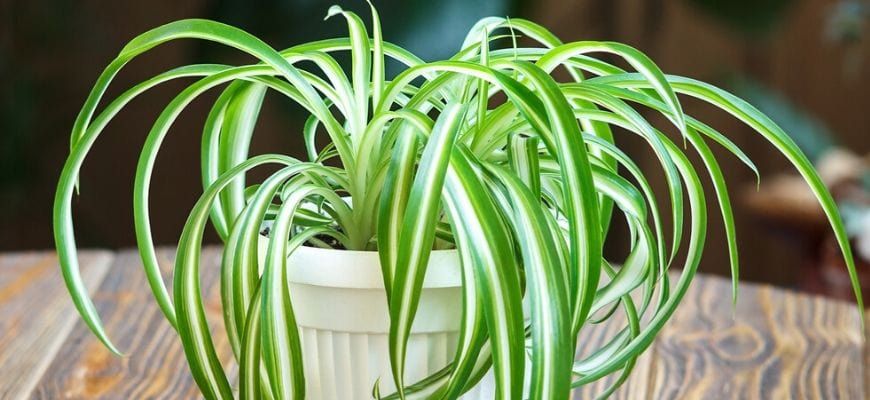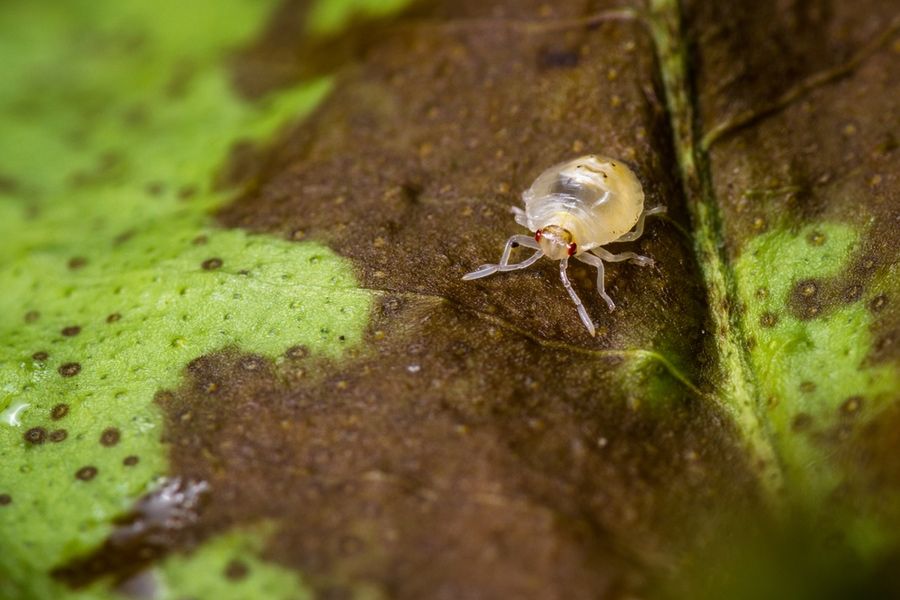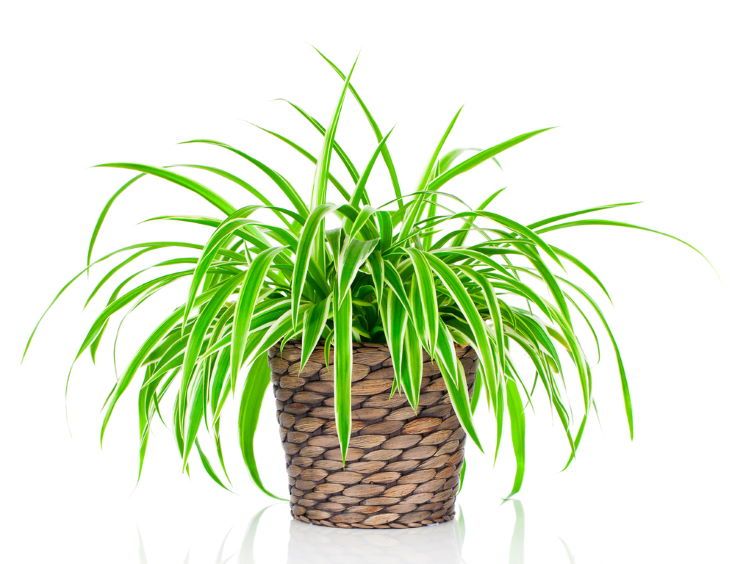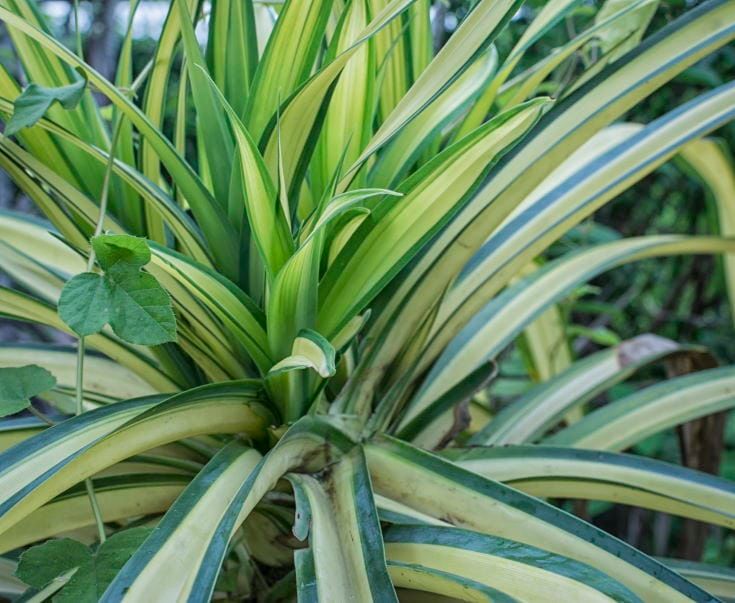There are plenty of people that are fond of the idea of having their own little green corner at home. If you don't have a big yard or a generous garden, that doesn't mean that you're not allowed to enjoy the perks and the satisfaction of growing your own plants.
Granted, some plants are less pretentious than others, and growing them is a fairly easy process. If you want to start your own little indoor green corner, one of the best ways to do so is by growing spider plants. Available for both indoor and outdoor growth, these plants actually look amazing and they could enhance the beauty of every outdoor garden.
Surprising Spider Plants Benefits
Most homeowners grow spider plants simply because they look amazing. But what many people don't know, is the spider plants actually have a wide range of applications and they bring forth the huge number of benefits:
Used in Recovery
A very surprising US study has revealed that the fact that when spider plants were placed in surgical recovery rooms, the patients staying in those rooms had better recovery statistics compared to those who didn’t. Specifically, they experienced less pain and anxiety, but they also had lower systolic blood pressure.
Lowers Carbon Monoxide
Spider plants are also very efficient in bringing down indoor carbon monoxide levels. Carbon monoxide is a gas that affects human health in many different ways. When people breathe carbon monoxide the oxygen saturation levels tend to decrease proportionally. You might have heard about people dying due to inhaling too much carbon dioxide as a result of perhaps leaving their stove open while they were sleeping.
When you suffer from mild carbon monoxide poisoning, you will experience difficulty in breathing, problems in concentrating, and even lack of coordination. What this means is that these plants can actually improve the home, but they can also help with problems such as sore throats, headaches, and fatigue.
Reduce Xylene Levels
Another thing the spider plants can help with is reducing the xylene levels in your environment. In case you don't know what that is, xylene is a solvent which is used to make products such as rubber, leather, but is also present in cigarette smoke, for example. Inhaling xylene can bring up health complications such as irritated nose, eyes, and skin, it can decrease lung function, cause memory impairment, and even stomach discomfort.
Non-Toxic
Furthermore, these plants are not toxic, which means that you should never be afraid of letting your children or your pets too close to them. As a parent or as a pet owner, you understand the importance of not having toxic plants inside your home, and spider plant leaves are not toxic to chew on. However, that doesn't really mean that you should let your children, or your pets, eat spider plants.
Decrease Formaldehyde
According to another study, introducing spider plants in a confined space for a full day can decrease formaldehyde levels by up to 90%. Formaldehyde is a chemical used in a variety of building products.
It often serves as an addictive inboard wood, but you can also find it in products such as mattresses, furniture, or even carpets. Formaldehyde is dangerous because it increases the risk of developing throat and nose cancer. This chemical is also very irritating particularly to the throat, your nose, and your eyes, and it can trigger allergies as well.
Growing These Plants Indoors
One of the best parts about having these plants indoors is the fact that they are relatively easy to grow. Because they are really easy to propagate, all you really have to do is pot the small plantlets when they have developed roots. You can also opt to divide mature plants during repotting, which is also fairly easy to do. And speaking of repotting, these plants don’t require repotting every year because they are more focused on producing plantlets rather than growing too much and actually needing a new pot.
They don't require any special lighting conditions, so even if your rooms are positioned in such a way as not to benefit from too much sunlight during the day, your plants can still thrive. What's interesting is the fact that spider plants like really bright light but they will also grow in other conditions, even in locations with semi-shade.
During the warmer seasons, and especially in summer, you can just water the plants as often as you like. You can also opt to mist them occasionally as well. When winter sinks in, you don’t have to water them that often, as they can settle for a less moist soil. It’s very important not to let your plants rest in cold drafts or have them stay in temperatures that are below 50 degrees Fahrenheit. As far as their potting mix is concerned, you can opt for well-aerated and fast-draining soil. In the summertime, you can feed them about once per week with liquid fertilizer.
Pests & Diseases
For the most part, spider plants are quite the fighters when it comes to pests, yet to have to be aware that there are a few threats you should be on the lookout for as there are insects that will try to munch away at your plants.
Insects
Some of the insects that are a threat to these plants include spider mites, whiteflies, mealybugs, and aphids. One of the best ways to fight off pests is to make sure that you rinse the plants as often as you can. This method is particularly effective against spider mites and aphids. You can also use miticide against spider mites, as all you have to do is to rub your plant down.
Pesticides
What you need to consider is the fact that some harsh pesticides shouldn’t be used on your spider plants if you have children or pets that might end up touching or eating the leaves. The best solution for those who want insecticides is to try all-natural products first. Some people like making their own natural pesticide with ingredients they have around the pantry (vinegar is quite the common ingredient in such mixtures).
Diseases
Another important chapter that you need to think about whether you’re considering getting spider plants or whatever other plants you might be pondering over, is diseases. Plants are susceptible to diseases that vary from one species of plant to another, and proper care is what keeps them healthy and increases their possibilities to thrive.
When it comes to these plants, there are no specific diseases that may be encountered in this species alone. For the most part, a spider plant will suffer if the soil is way too moist, which could be caused by either overwatering or soil that doesn’t have proper drainage.
Identifying
The best way to identify if your spider plant is sick is to look at leaves of the plant, and especially at the tips. If you notice that the tip is dry and chipped off, or if you come across any root infections or fungal leaves, those are also signs that your plant requires some extra attention.
Mineral deposits are another thing that could lead to your spider plants being sick. So, the two main reasons why spider plants could get diseases are too much water in the soil and mineral deposits caused by using tap water. Therefore, the solutions you have are either switching to soil with better drainage or purified/distilled water.
Tips for Caring for Spider Plants
As we’ve mentioned before, these plants aren’t really that pretentious. However, that doesn’t mean that applying some good old-fashioned plant-care tips won’t get you a long way with making the best out of these plants. In fact, there are plenty of people who choose to grow plants for the experience, which means that you might be open to the following list of tips that will help you enhance this experience:
- If you choose to plant these babies outdoors, make sure that you choose an area that has well-draining soil. In fact, soils that contain sand are one of the best options. People who don’t want to go for outdoor planting and want indoor spider plants can select a potting mixture such as coco coir, for instance. Even if choosing the right type of soil can make a difference in how fast your plants thrive, keep in mind that spider plants are highly adaptable, so the chances of them thriving in other types of soil is very likely as well.
- These plants will grow better and more beautiful when they are exposed to constant levels of humidity and temperature. If you want to plant them outdoors, know that they don’t do well in extreme temperatures, and they best thrive when the temperature they’re exposed to is between 50 and 80 degrees Fahrenheit. As far as humidity is concerned, know that spider plants love humidity, so if you’re really serious about having beautiful and mature plants, placing them next to a humidifier is a good idea.
- Another trick that might serve your purpose is using purified or distilled water. Fluoride in tap water might not be all that beneficial to these plants, especially not when you consider the fact that tap water is likely to leave behind a series of minerals that can destroy the plant once they’ve built up. It is also advisable to use water that’s at the room temperature if you want to avoid exposing your plant to a temperature shock that could weaken them.
- You can feel free to trim the leaves on your spider plants whenever they might need them. You want to get rid of brown or dead leaves or even trim leaf tips if needed. You can use a simple pair of scissors for your trimming needs. Important tip: whenever you see brown leaves, which could be a consequence of mineral build-up in the soil, which means that you might be using tap water instead of purified or distilled water.
- If you notice that your spider plants have leaves that are blanched, it could be due to over exposure to the sun, in which case it’s time to move the pots into the shade. If your plant spider plants outdoors and notices blanched stems and leaves, you might want to consider transplanting them to a location with more shade.
Spider Plants FAQ
Next up, let’s address some common questions that people have about spider plants. Pay close attention to each of them, as their answers may weigh a lot on your decision of committing to raising and caring for this type of plant.
Q: What are the best companions for spider plants?
A: These plants belong to the Asparagaceae family, being related to plants such as lettuce, beets, or tomatoes. If you’re planting these outdoors, you need to make sure they have enough room to grow and spread their leaves, so you might want to pair them with other plants that either don’t occupy too much space, or make sure that you leave a gap between them and the neighboring plants.
Q: What are the worst companions for spider plants?
A: Again, this is mostly a question that interests people who were planning to plant these outdoors. It is best if you avoid planting these plants next to others with edible roots. Potatoes, garlic, turnips, and other similar plants have high chances of attracting insects that could cause damage to the delicate roots of your plants.
Q: How fast does a spider plant grow?
A: The rate of growth for these plants will depend on several environmental factors, including fertilization, sunlight exposure, and watering. For the most part, a mature spider plant can have a maximum of 46 centimeters in height, but there are plants that can have about 60 centimeters, if we include their roots.
Q: What is the lifespan of spider plants?
A: If you manage to care for your spider plants accordingly, they don’t really have a pre-established lifespan and can live a considerable number of years. In fact, probably the main threat to these plants is a combination of diseases and pests. If you avoid overwatering your plants, overexposing them to the sun, and keeping them safe from pests and diseases, they will live quite a lot.
Conclusion
These cool plants are amazing to have, both indoors and in your garden. They aren’t difficult to care for, which makes them excellent for beginners who are just discovering the wonders of caring for green life. Whether you decide you want them potted or planted in the backyard, the care process for your spider plants is pretty standard and similar in both cases.
For the most part, all you have to do is make sure that your plants are getting soil with good drainage, that they are kept safe from mineral deposits caused by using the wrong type of water, and that you treat them in order to avoid insects from eating them or diseases from killing them.









